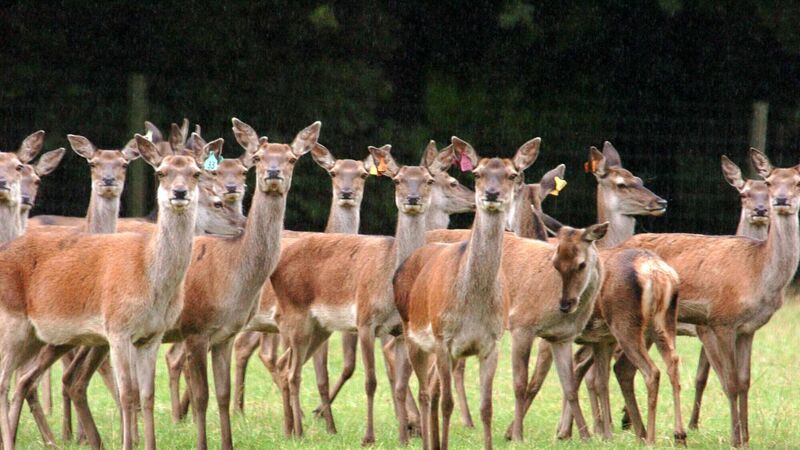Climate crisis may lead humans to shrink in size, fossil expert claims

Scientists studying red deer have said that warmer winters in northern Europe and Scandinavia may lead to the body size of these animals becoming smaller. Picture: Denis Scannell
The climate crisis may lead the human race to shrink in size, as mammals with smaller frames appear better able to deal with rising global temperatures, a leading fossil expert has said.
Professor Steve Brusatte, a palaeontologist at the University of Edinburgh, suggested that the way in which other mammals have previously responded to periods of climate change could offer an insight into humans’ future.
He likened the potential plight of people as similar to that of early horses, which became smaller in body size as temperatures rose around 55m years ago, a period called the Paleocene Eocene Thermal Maximum.
“There’s a great fossil record across this global warming event, it’s really the most recent big global warming event in the geological record,” he said. “The two plots are eerie, how similar they are.”
Writing in , Brusatte notes that animals in warmer parts of the world today are often smaller than those in colder areas, an ecological principle known as Bergmann’s rule.
“The reasons are not entirely understood, but it is probably, in part, because smaller animals have a higher surface area relative to their volume than plumper animals and can thus better shed excess heat,” he writes.
Brusatte said becoming smaller is “a common way that mammals deal with climate change”.
“Which does raise the question: If temperatures do spike really quickly might humans dwarf, might humans get smaller? And I think that’s certainly plausible.”
Brusatte argued that other human species have been found to shrink when resources were scarce — pointing to the so-called hobbit humans, Homo floresiensis, which once inhabited the island of Flores in Indonesia.
In a recent study, researchers studying human remains over the past million years have also suggested that temperature is a major predictor of body size variation, while scientists studying red deer have said that warmer winters in northern Europe and Scandinavia may lead to the body size of these animals becoming smaller.
However, not all experts agree that rising temperature causes mammals to shrink.
Profesor Adrian Lister, of the Natural History Museum in London, said the relationship shown by the recent human remains study is weak, while the strong correlations between temperature and mammal body size may often be down to the availability of food and resources.
CLIMATE & SUSTAINABILITY HUB













